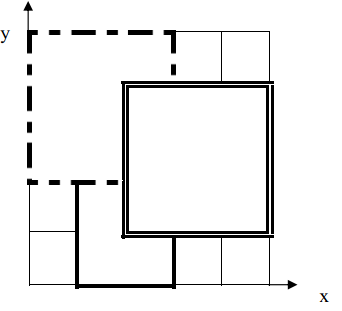Java NIO之Channel详细理解
介绍
理解:通道是一个连接I/O服务的管道并提供与该服务交互的方法。
Channel类似于传统的”流”,但是Channel不能直接访问数据,需要和缓冲区Buffer进行交互。
通道和传统流的区别:
通道可以是双向的,既可以读取数据,又可以写数据到通道。但流的读写通常是单项的
通道可以异步的读写
通道不能直接访问数据,需要和Buffer进行交互

通道可以简单的分为两大类:文件通道和Socket通道
文件通道
文件通道的主要实现是FileChannel。文件通道总是阻塞的,因此不能被置于非阻塞模式。
FileChannel的创建
FileChannel对象不能直接创建。一个FileChannel实例只能通过一个打开的file对象(RandomAccessFil、FileInputStraem、FileOutputStream等)上调用getChannel(0方法获取。调用getChannel()方法返回一个连接到相同文件的FileChannel对象且该FileChannel对象具有于file对象相同的访问权限。
创建FileChannel示例:
//创建一个RandomAccessFile(随机访问文件)对象,RandomAccessFile raf=new RandomAccessFile("D:\\test.txt", "rw");//通过RandomAccessFile对象的getChannel()方法。FileChannel是抽象类。FileChannel inChannel=raf.getChannel();
常用方法
package java.nio.channels;public abstract class FileChannel extends AbstractChannel implements ByteChannel, GatheringByteChannel, ScatteringByteChannel{// This is a partial API listing// All methods listed here can throw java.io.IOException//从FileChannel读取数据public abstract int read(ByteBuffer dst)public abstract int read (ByteBuffer dst, long position);//向FileChannel写数据public abstract int write(ByteBuffer src)public abstract int write (ByteBuffer src, long position);//获取文件大小public abstract long size();//获取位置public abstract long position();//设置位置public abstract void position (long newPosition);//用于文件截取public abstract void truncate (long size);//将通道里尚未写入磁盘的数据强制写到磁盘上public abstract void force (boolean metaData);//文件锁定,position-开始位置,size-锁定区域的大小,shared-表示锁是否共享(false为独占),lock()锁定整个文件public final FileLock lock();public abstract FileLock lock (long position, long size, boolean shared);public final FileLock tryLock();public abstract FileLock tryLock (long position, long size, boolean shared);//内存映射文件public abstract MappedByteBuffer map (MapMode mode, long position, long size);public static class MapMode;public static final MapMode READ_ONLY;public static final MapMode READ_WRITE;public static final MapMode PRIVATE;//用于通道之间的数据传输public abstract long transferTo (long position, long count, WritableByteChannel target);public abstract long transferFrom (ReadableByteChannel src, long position, long count);}
public abstract MappedByteBuffer map (MapMode mode, long position, long size)
该map()方法可以在一个打开的文件和一个特殊类型的ByteBuffer之间建立虚拟内存映射。通过内存映射机制来访问一个文件会比使用常规方法读写高效得多,甚至比使用通道的效率都高。
transferTo()将数据从FileChannel传输到其他的Channel中。
transferFrom()从其他Channel获取数据
transferTo()和transferFrom()方法允许将一个通道交叉连接到另一个通道,而不需要通过一个中间缓存来传递数据。只有FileChannel类有这两个方法。
transferFrom()示例
package test;import java.io.IOException;import java.io.RandomAccessFile;import java.nio.channels.FileChannel;public class FileChannelTest2 {public static void main(String[] args) throws IOException {RandomAccessFile aFile = new RandomAccessFile("d:\\ fromFile.txt", "rw");FileChannel fromChannel = aFile.getChannel();RandomAccessFile bFile = new RandomAccessFile("d:\\ toFile.txt", "rw");FileChannel toChannel = bFile.getChannel();long position = 0;long count = fromChannel.size();toChannel.transferFrom(fromChannel, position, count);aFile.close();bFile.close();System.out.println("over!");}}
transferTo()示例
package test;import java.io.IOException;import java.io.RandomAccessFile;import java.nio.channels.FileChannel;public class FileChannelTest3 {public static void main(String[] args) throws IOException {RandomAccessFile aFile = new RandomAccessFile("d:\\fromFile.txt", "rw");FileChannel fromChannel = aFile.getChannel();RandomAccessFile bFile = new RandomAccessFile("d:\\toFile.txt", "rw");FileChannel toChannel = bFile.getChannel();long position = 0;long count = fromChannel.size();fromChannel.transferTo(position, count, toChannel);aFile.close();bFile.close();System.out.println("over!");}}
FileChannel示例
package test;import java.io.IOException;import java.io.RandomAccessFile;import java.nio.ByteBuffer;import java.nio.channels.FileChannel;public class FileChannelTest {public static void main(String[] args) throws IOException {RandomAccessFile aFile = new RandomAccessFile("d:\\test.txt", "rw");FileChannel inChannel = aFile.getChannel();ByteBuffer buf = ByteBuffer.allocate(48);int bytesRead = inChannel.read(buf);while (bytesRead != -1) {System.out.println("Read " + bytesRead);buf.flip();while (buf.hasRemaining()) {System.out.print((char) buf.get());}buf.clear();bytesRead = inChannel.read(buf);}aFile.close();System.out.println("wan");}}
Socket**通道**
常用的Socket通道
DatagramChannel:用于UDP的数据读写
SocketChannel: 用于TCP的数据读写,一般是客户端实现
ServerSocketChannel: 允许我们监听TCP连接请求,每个请求会创建会一个SocketChannel,一般是服务器实现
以上Channel都继承AbstractSelectableChannel,于是这三个Channel都是可以设置成非阻塞模式的。Socket通道(DatagramChannel、SocketChannel和ServerSocketChannel)在被实例化时都会创建一个对等的socket对象,即我们熟悉的java.net的类型(Socket、ServerSocket和DatagramSocket)。
1.非阻塞模式
Socket通道可以在非阻塞模式下运行,跟非阻塞/阻塞相关的函数(SelecableChannel类下)
//配置是否是阻塞模式(block为true,则为阻塞模式。block为false,则设置为非阻塞模式)
public abstract SelectableChannel configureBlocking(boolean block)//获取当前是否是阻塞模式public abstract boolean isBlocking();//获取 configureBlocking和register方法同步的锁public abstract Object blockingLock();
2.ServerSocketChannel
ServerSocketChannel用于监听TCP连接请求,常用的API如下:
public abstract class ServerSocketChannelextends AbstractSelectableChannelimplements NetworkChannel{//静态方法,用于创建一个新的ServerSocketChannel对象,后续还需要跟ServerSocket进行绑定操作public static ServerSocketChannel open()//获取关联该ServerSocketChannel的server socketpublic abstract ServerSocket socket()//当创建ServerSocketChannel对象并绑定一个ServerSocket关联的通道之后,//调用该方法可以监听客户端的连接请求public abstract SocketChannel accept()//并绑定指定端口的ServerSocket,(jdk1.7以上才有)public final ServerSocketChannel bind(SocketAddress local)//同选择器一起使用,获取感兴趣的操作public final int validOps()}
静态方法open()用于创建一个新的ServerSocketChannel对象,将会返回一个未绑定的ServerSocket关联的通道。该对等ServerSocket可以通过在返回的ServerSocketChannel上调用socket()方法获取。jdk1.7以前ServerSocketChannel没有bind()方法,因此必须取出对等的socket并使用它来绑定一个端口开始监听连接
ServerSocketChannel ssc = ServerSocketChannel.open();ServerSocket serverSocket = ssc.socket();serverSocket.bind(new InetSocketAddress(1234));
jdk1.7以后ServerSocketChannel提供了bind()方法,所以以上可以简化为
ServerSocketChannel ssc = ServerSocketChannel.open().bind(new InetSocketAddress(1234));
简单的ServerSocketChannel示例:
import java.io.IOException;import java.net.InetSocketAddress;import java.nio.ByteBuffer;import java.nio.channels.ServerSocketChannel;import java.nio.channels.SocketChannel;public class ServerSocketChannelDemo {public static final String GREETING = "Hello I must be going.\r\n";public static void main(String[] args) throws IOException, InterruptedException {int port = 8088;if (args.length > 0){port = Integer.parseInt(args[0]);}ByteBuffer buffer = ByteBuffer.wrap(GREETING.getBytes());ServerSocketChannel ssc = ServerSocketChannel.open();ssc.socket().bind(new InetSocketAddress(port));ssc.configureBlocking(false);while (true){System.out.println("Waiting for connections");SocketChannel sc = ssc.accept();if (sc == null){Thread.sleep(2000);}else {System.out.println("Incoming connection form:"+sc.socket().getRemoteSocketAddress());buffer.rewind();sc.write(buffer);sc.close();}}}}
3. SocketChannel
SocketChannel 常见的API如下:
public abstract class SocketChannel extends AbstractSelectableChannelimplements ByteChannel, ScatteringByteChannel, GatheringByteChannel,NetworkChannel{//静态方法,打开套接字通道(创建SocketChannel实例)public static SocketChannel open()//静态方法,打开套接字通道并将其连接到远程地址public static SocketChannel open(SocketAddress remote)//返回一个操作集,标识此通道所支持的操作public final int validOps()//用于将Socket绑定到一个端口public abstract SocketChannel bind(SocketAddress local)//获取该SocketChannel关联的Socket(套接字)public abstract Socket socket()//判断是否已连接此通道的网络套接字public abstract boolean isConnected()//判断此通道上是否正在进行连接操作。public abstract boolean isConnectionPending()//用于SocketChannel连接到远程地址public abstract boolean connect(SocketAddress remote)//从通道中读取数据到缓冲区中public abstract int read(ByteBuffer dst)public abstract long read(ByteBuffer[] dsts, int offset, int length)//将缓冲区的数据写入到通道中public abstract int write(ByteBuffer src)public abstract long write(ByteBuffer[] srcs, int offset, int length)}
创建SocketChannel对象并连接到远程地址
SocketChannel sc = SocketChannel.open(new InetSocketAddress(ip,port));
等价于
SocketChannel sc = SocketChannel.open();sc.connect(new InetSocketAddress(ip,port));线程在连接建立好或超时之前都保持阻塞。示例:import java.io.IOException;import java.net.InetSocketAddress;import java.nio.ByteBuffer;import java.nio.channels.SocketChannel;public class SocketChannelDemo {public static void main(String[] args) {int port = 8088;String ip = "127.0.0.1";ByteBuffer readBuffer = ByteBuffer.allocate(512);try {SocketChannel socketChannel = SocketChannel.open();//创建一个socketChannelsocketChannel.connect(new InetSocketAddress(ip,port));while (!socketChannel.isConnected()){System.out.println("connecting ...");Thread.sleep(1000);}System.out.println("connected");socketChannel.write(ByteBuffer.wrap("Hello,I am Client".getBytes()));while (socketChannel.read(readBuffer) > 0){System.out.println(readBuffer.toString());readBuffer.flip();}} catch (IOException e) {e.printStackTrace();} catch (InterruptedException e) {e.printStackTrace();}}}
4. DatagramChannel
SocketChannel模拟面向连接的流协议(如TCP/IP),而DatagramChannel则面向无连接的协议(如UDP/IP)public abstract class DatagramChannelextends AbstractSelectableChannelimplements ByteChannel, ScatteringByteChannel, GatheringByteChannel, MulticastChannel{//创建DatagramChannel实例public static DatagramChannel open()public static DatagramChannel open(ProtocolFamily family)public final int validOps()//将通道的套接字绑定到本地地址public abstract DatagramChannel bind(SocketAddress local)//获取该DatagramChannel关联的DatagramSocket对象public abstract DatagramSocket socket()//是否已连接到套接字public abstract boolean isConnected()//用于DatagramChannel连接到远程地址public abstract DatagramChannel connect(SocketAddress remote)//通道此DatagramChannel接受到的数据包public abstract SocketAddress receive(ByteBuffer dst)//通过此DatagramChannel发送数据包public abstract int send(ByteBuffer src, SocketAddress target)//从此通道读取数据包public abstract int read(ByteBuffer dst)public abstract long read(ByteBuffer[] dsts, int offset, int length)//将数据写入到此通道public abstract int write(ByteBuffer src)public final long write(ByteBuffer[] srcs) throws IOException}
打开DatagramChannel
DatagramChannel channel = DatagramChannel.open();
channel.socket().bind(new InetAddress(8088));
DatagramChannel对应的DatagramSocket如果未调用bind()绑定端口号,也是可以通讯的,因为系统默认会动态分配一个端口号
receive()方法,接受数据包
ByteBuffer buffer = ByteBuffer.allocate(48);buffer.clear();channel.receive(buffer);
send()方法,发送数据包
String newData = "New String to send,time:" + System.currentTimeMillis();ByteBuffer buffer = ByteBuffer.allocate(48);buffer.clear();buffer.put(newData.getBytes());buffer.flip();int bytesSent = channel.send(buffer, new InetAddress("jenkov.com", 80));
Connecting to a Specific Address
DatagramChannel是可以“连接”到网络上特定地址的。因为UDP是无连接的,所以这种“连接”不是真正像TCP那样的和远程地址建立了一个连接。不如说是它将锁定你的DatagramChannel,以便你只能向一个特定的地址发送和接收数据包。
连接
channel.connect(new InetAddress(“jenkov.com”, 80));
当“连接”建立后,你可以像使用传统的Channel一样调用read()和write()方法。只是对于发送的数据,你不会得到任何关于交付的保证。下面是一些例子:
int bytesRead = channel.read(buffer); //读取数据
int bytesWrite = channel.write(buffer); //写数据
以上内容主要整理自:《Java NIO》


































还没有评论,来说两句吧...